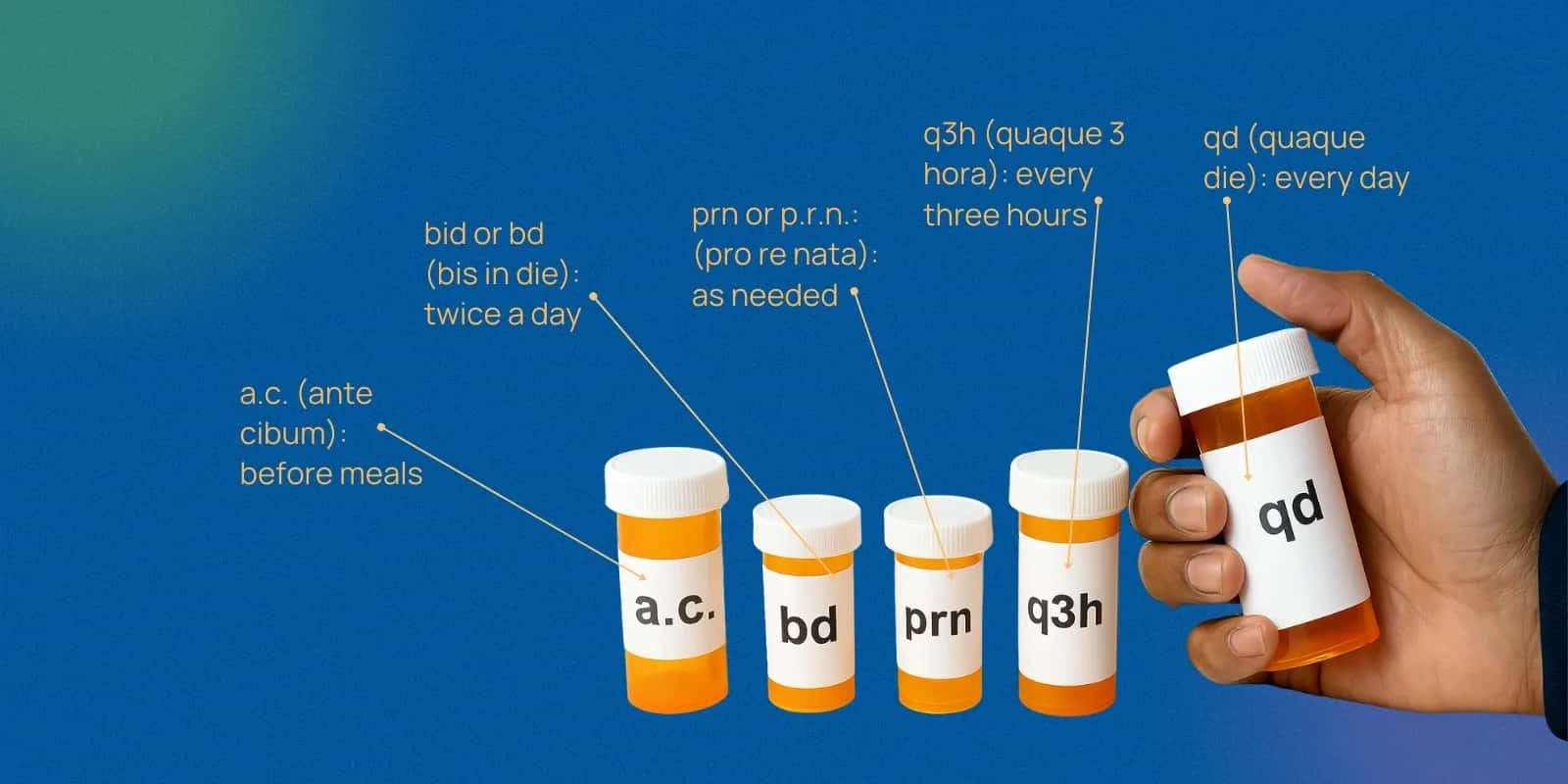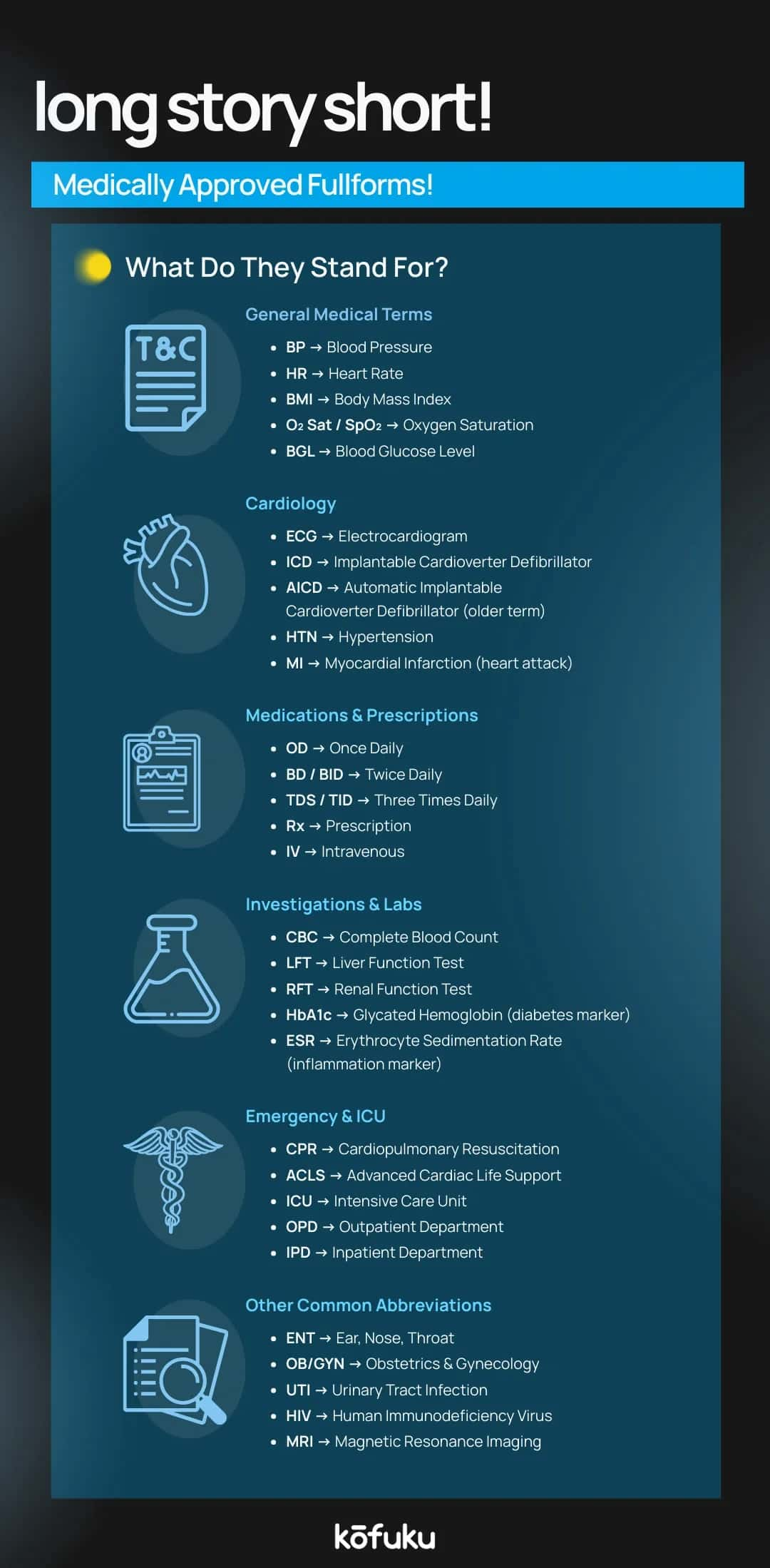What Is an AICD and ICD? Full Form and Medical Abbreviations Explained

Introduction
The diagnosis of a heart rhythm disorder can feel overwhelming, especially when you hear about the risk of sudden cardiac arrest. For people at higher risk, an Implantable Cardioverter-Defibrillator (ICD) is a powerful safeguard against dangerous heart rhythms.
In this article, you’ll learn what ICDs and AICDs are, how they work, when they’re recommended, and what to expect if you or a loved one needs one.
How Does an Implantable Cardioverter-Defibrillator (ICD) Work?
An ICD is a small, battery-operated device that is placed in the body, typically under the skin on your chest. ICDs monitor your heart rhythm, and if it detects an abnormal heart rhythm, particularly if it’s dangerously fast, it can:
- Send small electrical pacing signals to restore normal rhythm.
- Deliver an electrical shock (defibrillation) if the abnormal heart rhythm does not change or worsen.
ICD and Heart Failure: How These Devices Help Manage Heart Conditions
Patients with heart failure typically have a weakened heart muscle, so they’re at increased risk for life-threatening arrhythmias. An ICD can be an integral part of a comprehensive heart failure management strategy because it can:
-
Prevent sudden cardiac death with immediate treatment of dangerous rhythms.
-
Some advanced ICDs have CRT (cardiac resynchronisation therapy) that coordinates the left and right heart chambers' beats.
-
Few ICDs monitor your heart performance continuously, which can be accessed by your cardiologist during follow-up visits.
Decreasing the risk of fatal arrhythmias provides heart failure patients with a feeling of security and an improved quality of life.

Types of ICDs: Traditional, Subcutaneous, and Advanced Models
There are different types of ICDs, each designed for different patient needs:
-
Traditional ICD: The leads (wires) are positioned in the heart via blood vessels. The device is implanted under the skin, near your collarbone.
-
Subcutaneous ICD (S-ICD): The leads are positioned just under the skin, and no leads are in the blood vessel or heart. This is a good option for young patients.
-
Cardiac Resynchronisation Therapy Defibrillator (CRT-D): Combines the functions of ICD with pacing to improve the heart function of a heart failure patient.
-
Leadless or Novel ICDs: New technology that is smaller and does not require transvenous leads.
ICD Implantation Procedure: What to Expect and How the Device Is Placed
ICD surgery is a minor procedure that’s usually completed with local anaesthesia. The procedure generally goes as follows:
-
Pre-operative work-up: ECG, echocardiogram, and blood work are performed.
-
Incision: The surgeon will make a small incision close to the shoulder or collarbone.
-
Lead implant: For transvenous ICDs, leads are threaded through veins to the heart.
-
Device implant: The ICD is attached to the leads and positioned in a tissue pocket under the skin.
-
Testing: Confirm that the ICD detects and treats arrhythmias.
-
Closure: The incision is then closed with stitches or adhesive.
The procedure typically takes 1 - 3 hours, and the patient is discharged the next day, provided that there are no complications.
Understanding the ICD Scar: Appearance, Healing, and Care
After the surgery, you will notice a small scar of about two to three inches that follows the surgical incision. The scar will fade but remain slightly visible over time, and you may notice a small area or bump where the ICD was implanted.
Care instructions after surgery include keeping the wound clean, not lifting heavy weights for several weeks, and being mindful of redness or swelling, which could be possible signs of infection.

ICD Tracking and Monitoring: How Doctors Follow Your Device Performance
Most new devices have modern remote monitoring systems. Your doctor can:
- Look at your heart rhythm history since your last office visit.
- Ensure the battery life of the device lasts.
- Automatically be alerted if the ICD detects a serious cardiac issue.
ICD Coding: ICD-10 Codes for Cardiac Pacemaker and Defibrillator
Medical records and insurance systems use ICD-10 codes. Some of them are:
- Z95.810: Presence of automatic (implantable) cardiac defibrillator
- Z95.0: Cardiac pacemaker
- I46.9: Cardiac arrest, cause unspecified (potential correlation with ICD indications)
These codes are important when tracking procedures as part of medical billing, statistics, and research.
Patient Life with an AICD: Lifestyle, Limitations, and Support
Adjusting to life with an AICD can be daunting at first, but most patients return to normal life after recovery.
-
Activity: Avoid contact sports or any heavy trauma to your chest. Light to moderate exercise is typically safe..
-
Driving: Restrictions can depend on jurisdiction and reason for AICD implantation.
-
Travel: Air travel is safe. Although you may want to carry your trial AICD ID card in case you’re stopped by security.
-
Medical procedures: Always make sure that your doctors and dentists know about the AICD before any treatment.
Support groups and cardiac rehab can help you adjust mentally and physically after an ICD/AICD implantation.

FAQs
Q. What is the full form of ICD and AICD in medical terms?
A. ICD: Implantable Cardioverter-Defibrillator AICD: Automatic Implantable Cardioverter-Defibrillator (older but still used term)
Q. How does an AICD defibrillator work in heart patients?
A. It monitors heart rhythm and delivers pacing or shocks to stop dangerous arrhythmias.
Q. What is the role of an ICD in heart failure management?
A. It monitors heart rhythm and delivers shocks to prevent sudden cardiac death.
Q. How long does it take to recover from an ICD implantation?
A. It usually takes 2–4 weeks for patients to recover from an ICD implantation, with activity restrictions.
Q. What is the ICD-10 code for a defibrillator and cardiac pacemaker in situ?
A. Z95.810 for ICD, Z95.0 for pacemaker.
Q. What is the difference between an ICD and a pacemaker?
A. An ICD also delivers shocks, whereas a pacemaker just regulates heartbeat.
Q. What is included in an ICD kit?
A. An ICD kit contains the main device, leads, battery, and implantation tools.

10 Medical Equipment That Must Be Kept at Home

Best Creams and Remedies to Heal Cracked Heels Fast

8 Reasons Why Fitness Is Crucial for Heart Health

Panic Attack vs Heart Attack - Know And Tell The Difference

Taking Care of Your Teeth Means Taking Care of Your Heart – A Deep Dive

